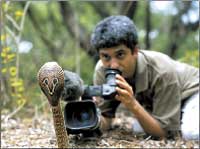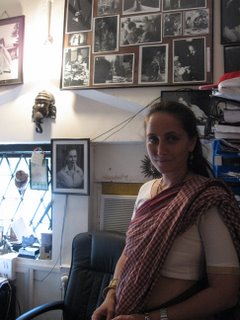
Made In Chennai – Rehane Yavar Dhala
This is where my husband is, my family is. And I want it all – a career and a family. It doesn’t matter where you are based – if you do your job well, the whole world will know how good you are.
After being part of the vibrant fashion scene in Rome, I moved to Chennai, married with a baby. I wanted to express myself through my art, but frustratingly, there were no takers for western wear. I didn’t have a label back then, but I got the opportunity to design for Jacqueline Verghese who contested in Femina Miss India (I think in 1996). When I won the Best Designer of the Year award at the pageant, it was a validation of my work.
Lakme Fashion Week Mumbai 2002. It was not just about me – it was about being pitched against so much design talent, so many designers with their own thumb prints from across India, all under one roof. The experience reaffirmed that my designs were unique and distinct.
When I first began in Chennai, I did simple silhouettes with excellent cuts and no embellishments. There were no takers. Sadly, even today, there are no takers for a simple well-cut trouser. It’s almost always unsold in my boutique. Nobody even tries it on. But when I wear it, people want to know where I bought it!
More is less. I decided to change my design definition and go the opposite direction – from simple, unembellished to flamboyant, over-embellished design. I have now toned it down a little to strike a balance.
When one of my tailors got married, in his wedding card, under his name, it read, ‘Head Tailor for Rehane’. I thought that was very cute!
Belief in myself and dogged determination. Nothing on earth can stop me! I believe everything starts in the mind. So, when someone gave me a copy of Rhonda Byrne’s The Secret, none of it was new to me – I already knew and practised what was in the book.
Busy. In April, there’s Fashion Week Delhi. In May, I’m working on a collection in tandem with the Handloom Council. In July, I’m launching my range of spiritual wear in fabrics like organic cotton, ahimsa silk etc. It’s very simple, new-age lounge wear that is comfortable and pleasing to the eye. In August, I’m preparing for Pret A Porter Paris. I’ll be taking the same Paris collection to Fashion Week Delhi in end-September / October.
If you think it’s easy, think again. If you think just because you’re from Chennai, your collection will be accepted here, forget it. If you think making a style statement will work, you will hardly get any response beyond media labelling it as off-beat. If you’re in it for the money, you will never succeed. Few people have the gift of making money and they make the best finance professionals, not designers. And finally, you will have to twist and bend yourself – be willing to make ghaghras for brides. It can also be very interesting.










